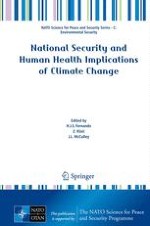2012 | OriginalPaper | Buchkapitel
25. Implications of Climate Change for Marginal and Inland Seas
verfasst von : Peter O. Zavialov, Andrey G. Zatsepin, Peter N. Makkaveev, Alexander Kazmin, Vyacheslav V. Kremenetskiy, Vladimir B. Piotuh
Erschienen in: National Security and Human Health Implications of Climate Change
Verlag: Springer Netherlands
Aktivieren Sie unsere intelligente Suche, um passende Fachinhalte oder Patente zu finden.
Wählen Sie Textabschnitte aus um mit Künstlicher Intelligenz passenden Patente zu finden. powered by
Markieren Sie Textabschnitte, um KI-gestützt weitere passende Inhalte zu finden. powered by
